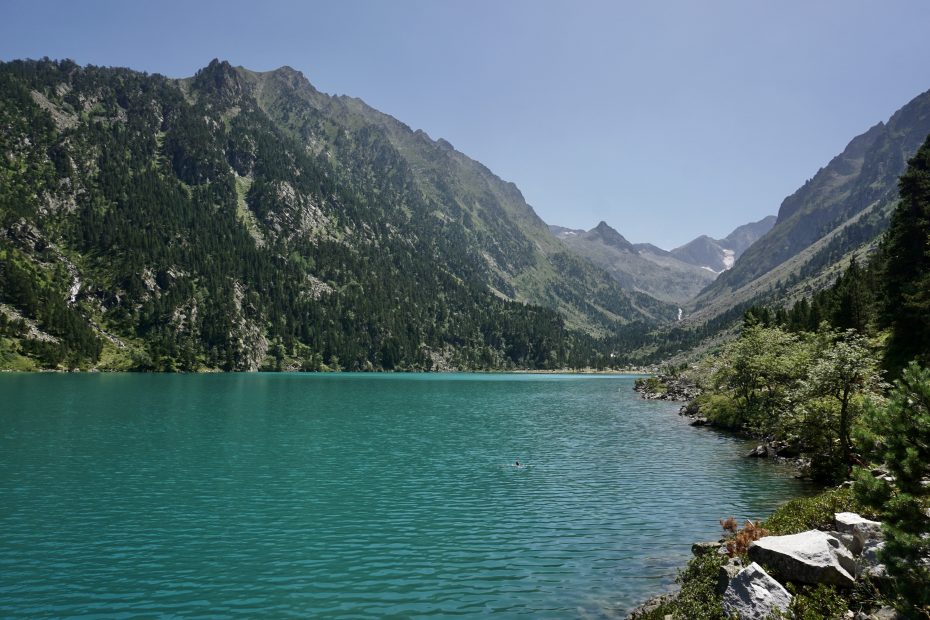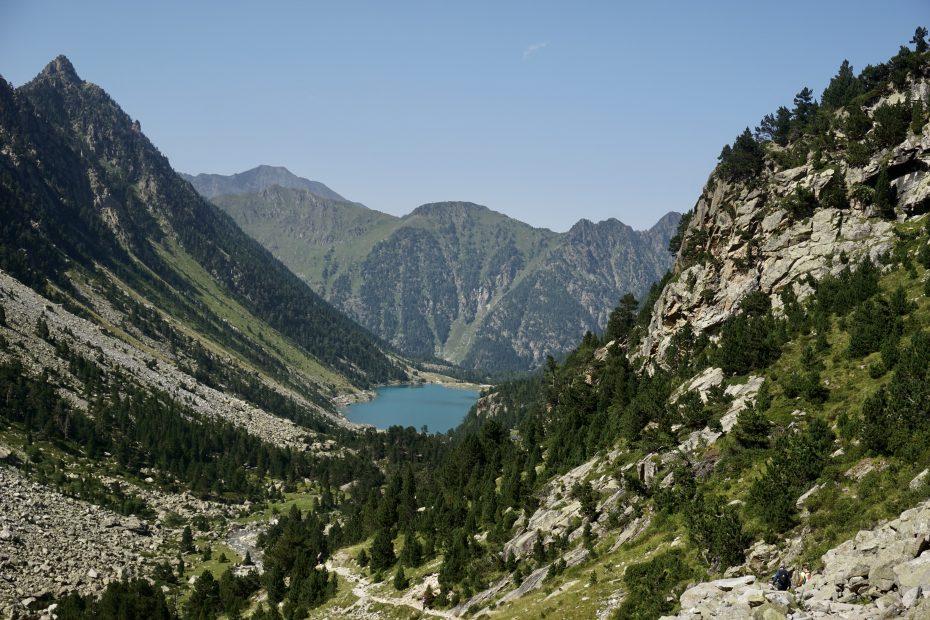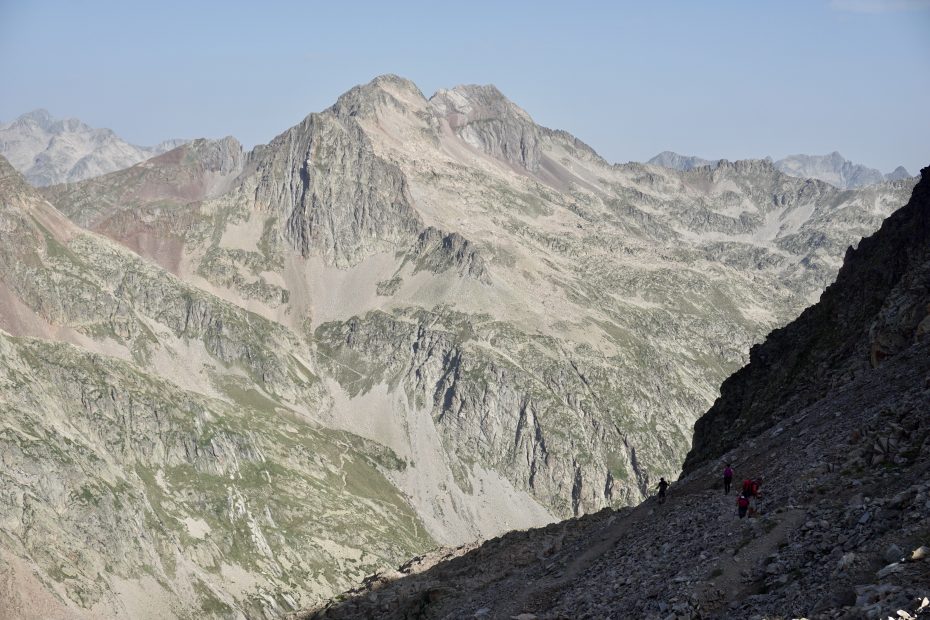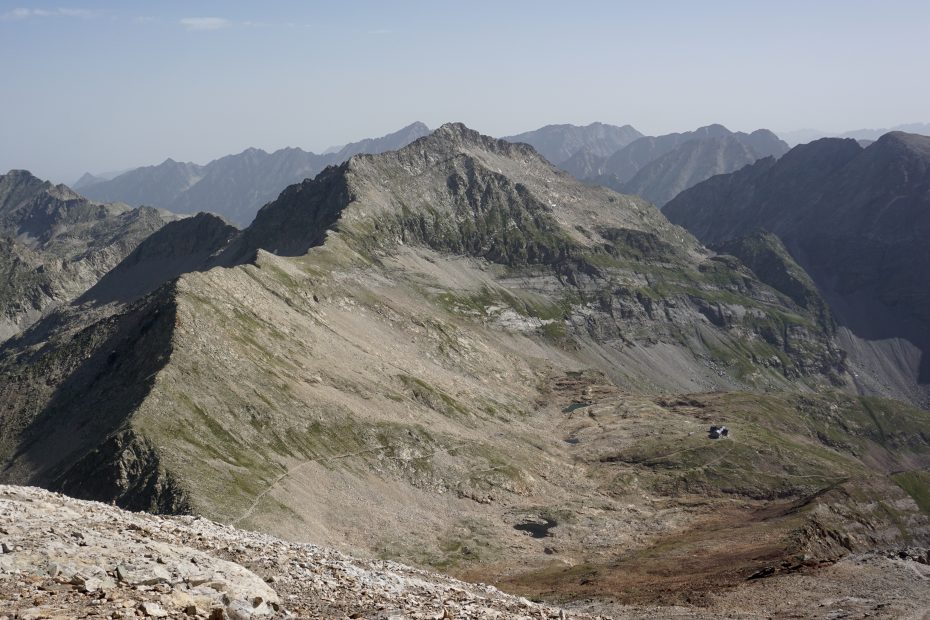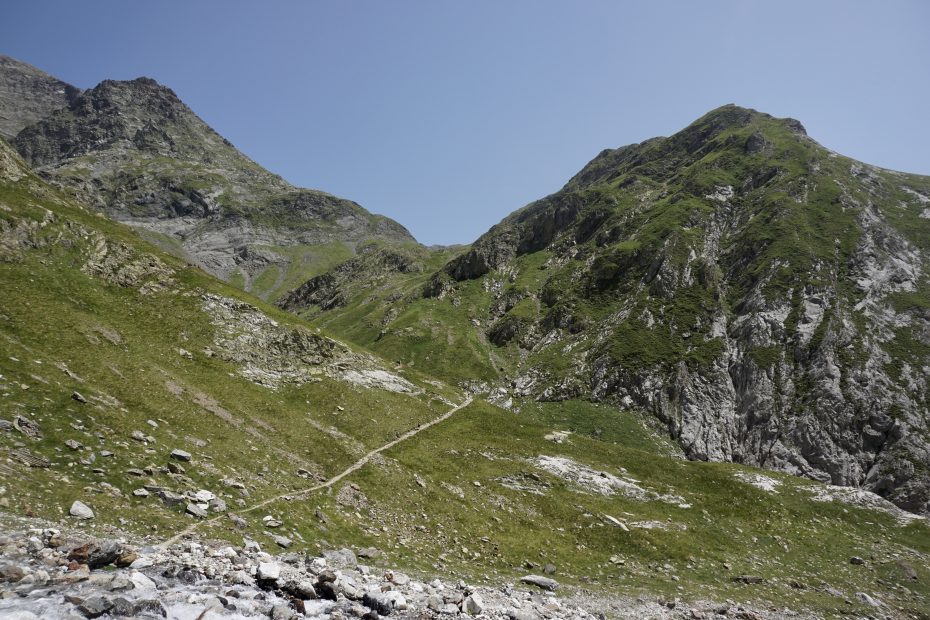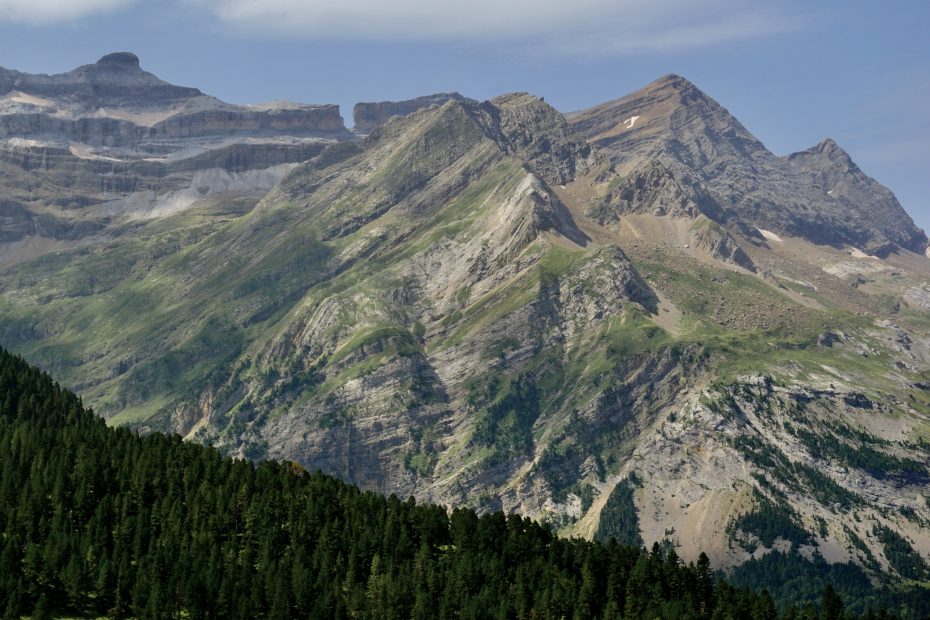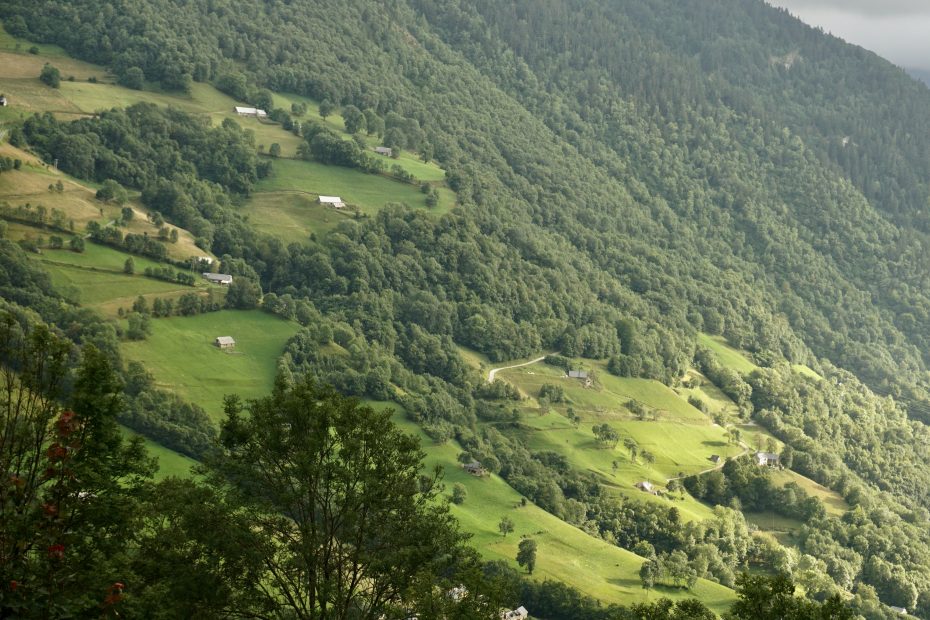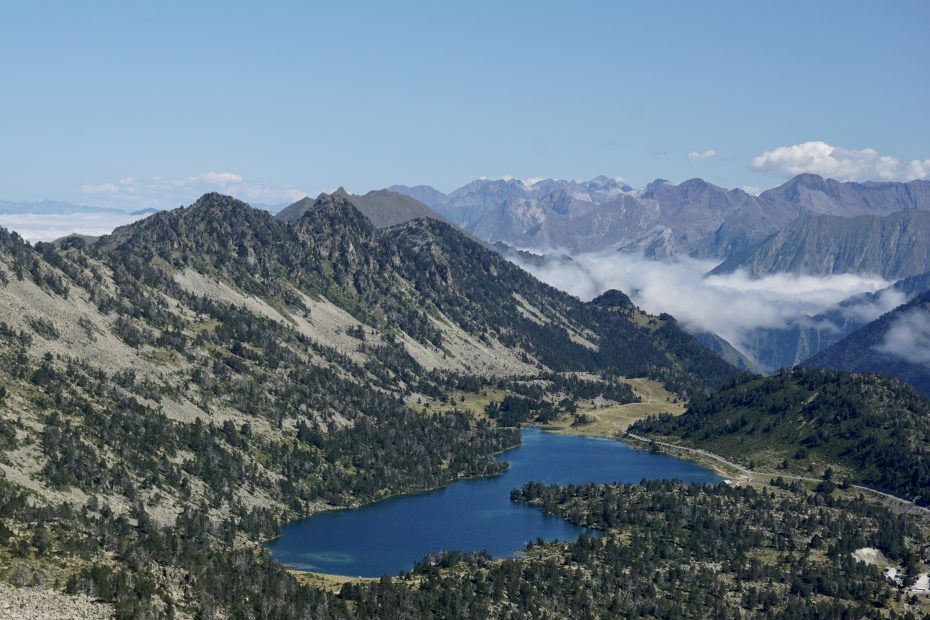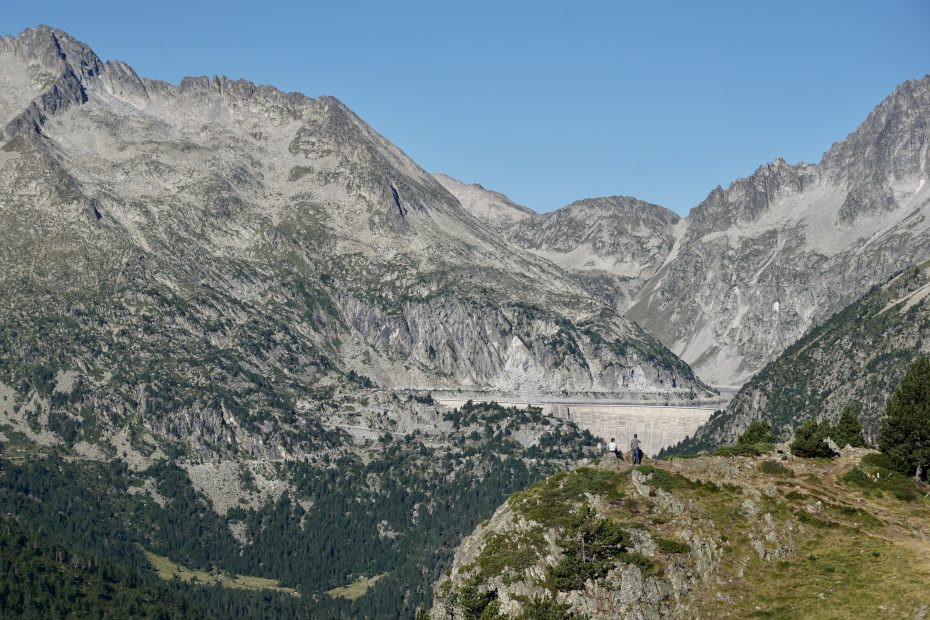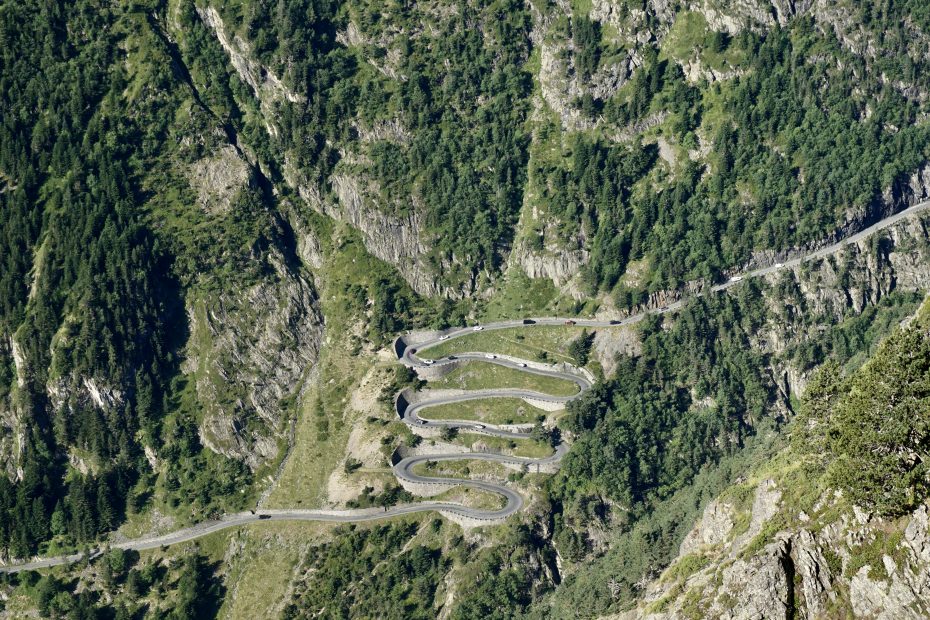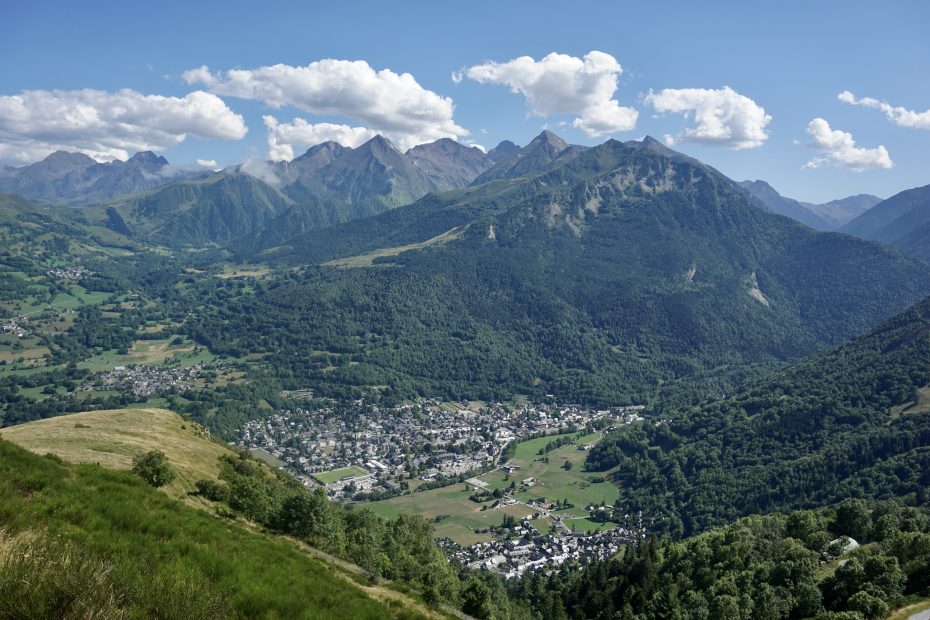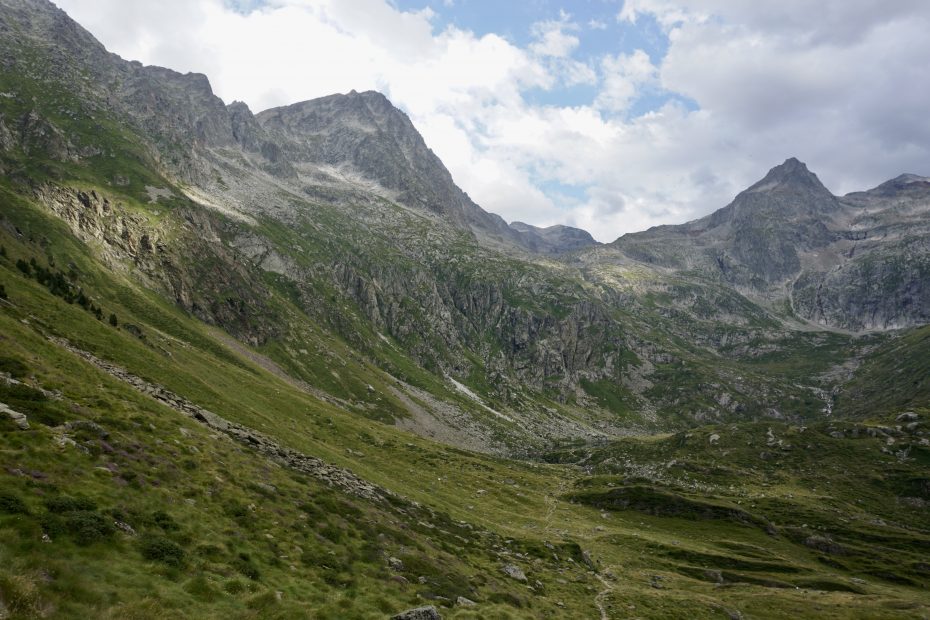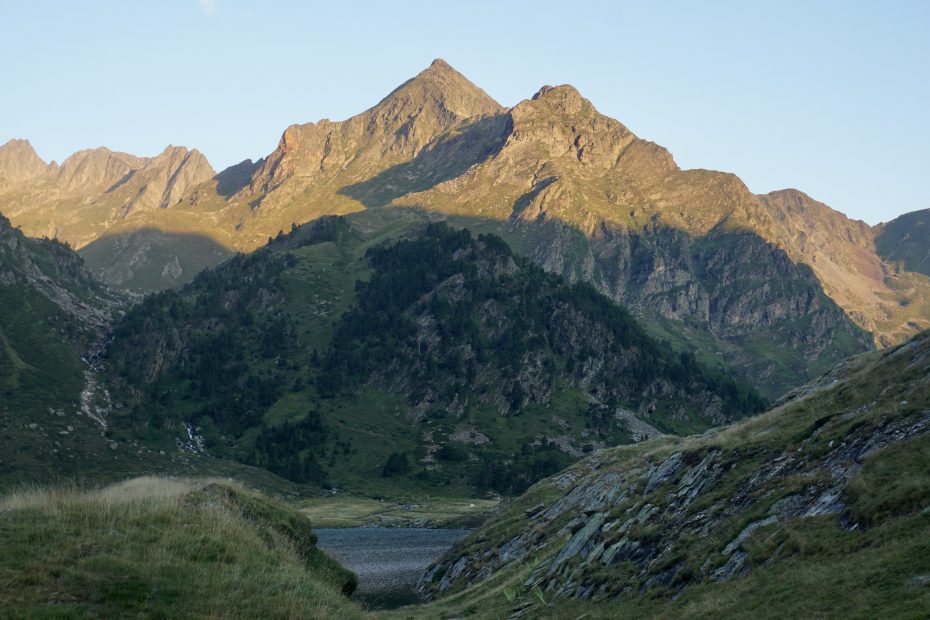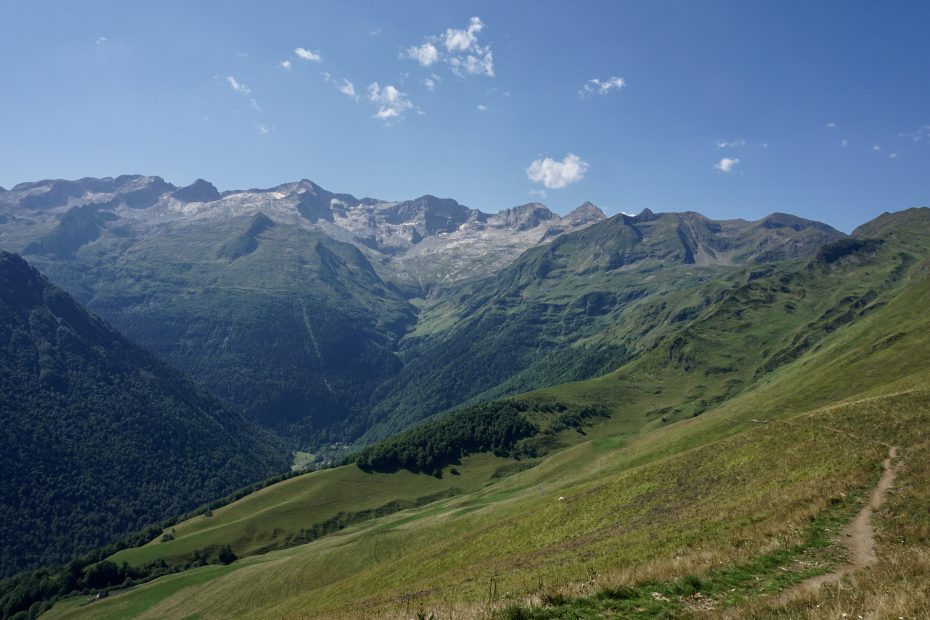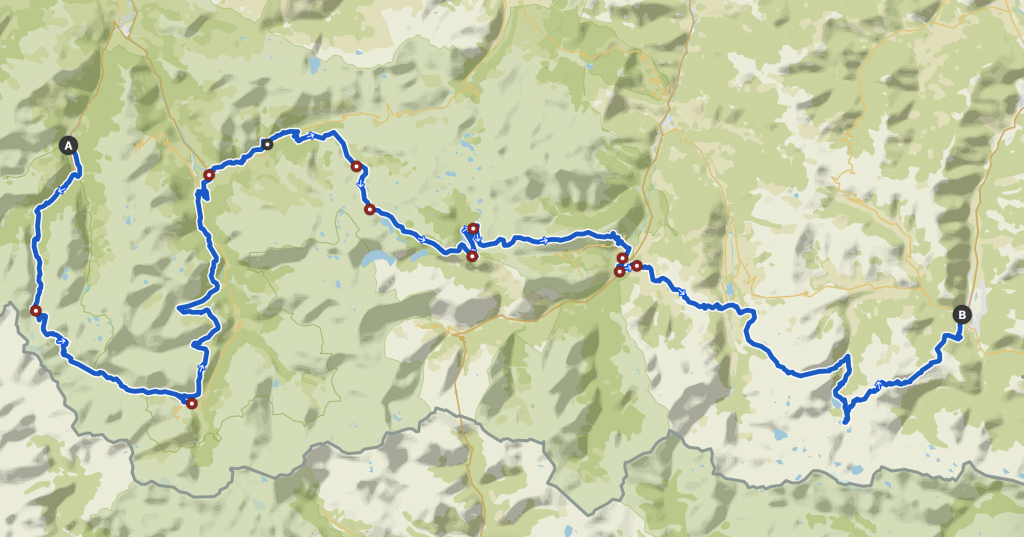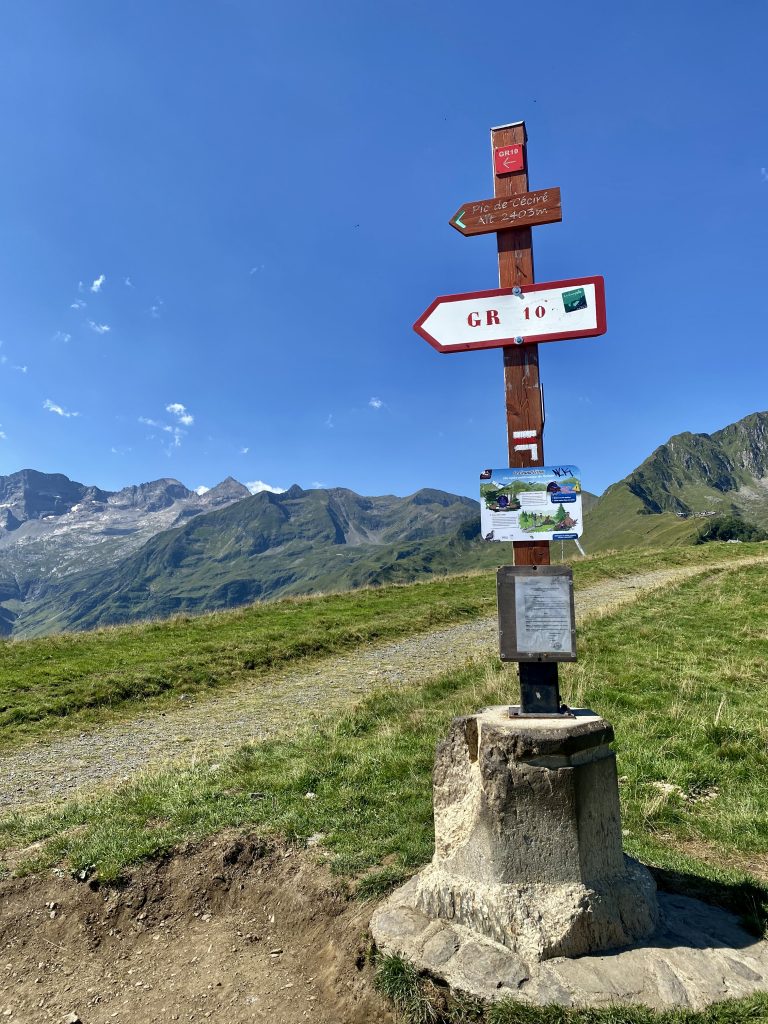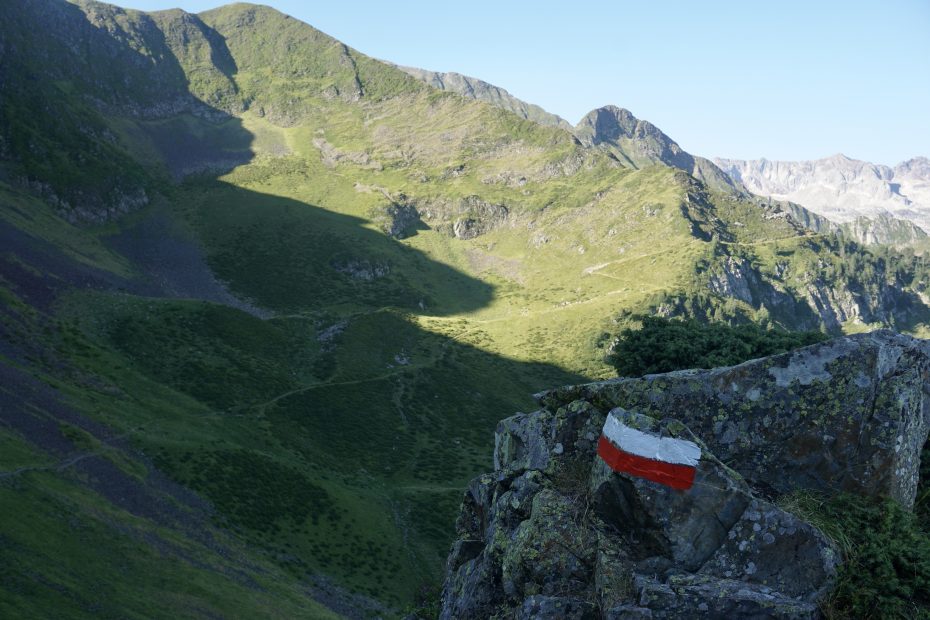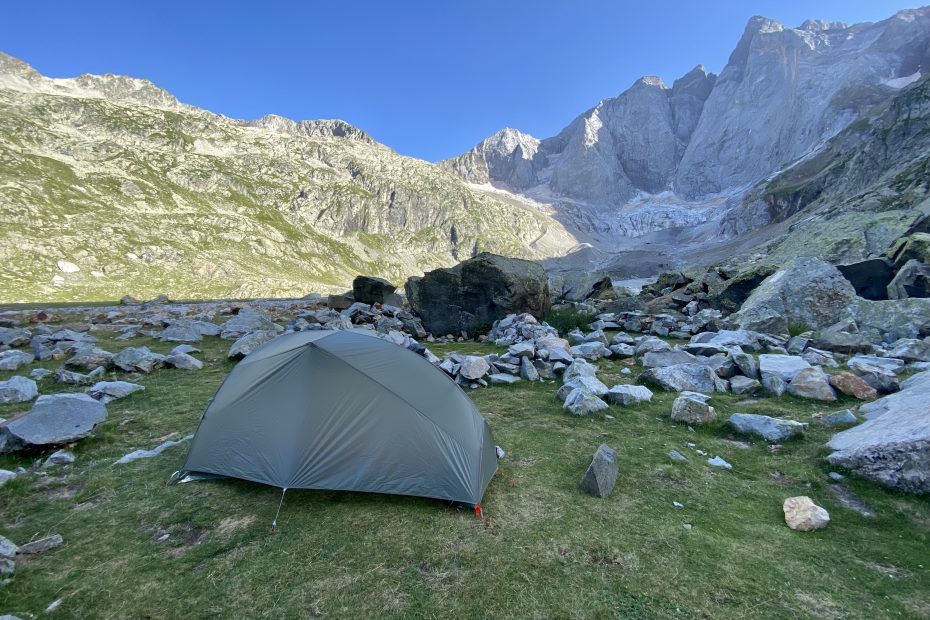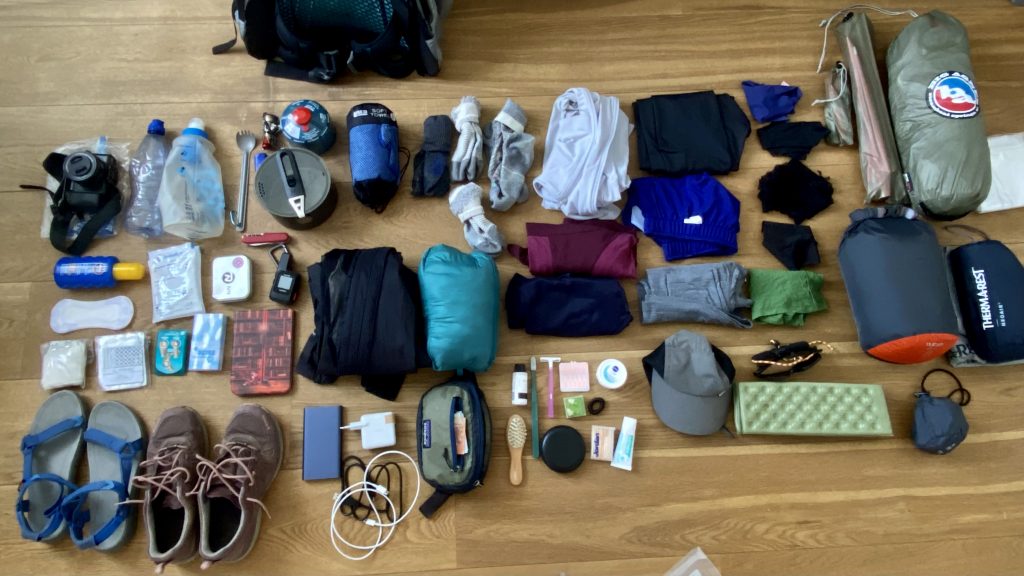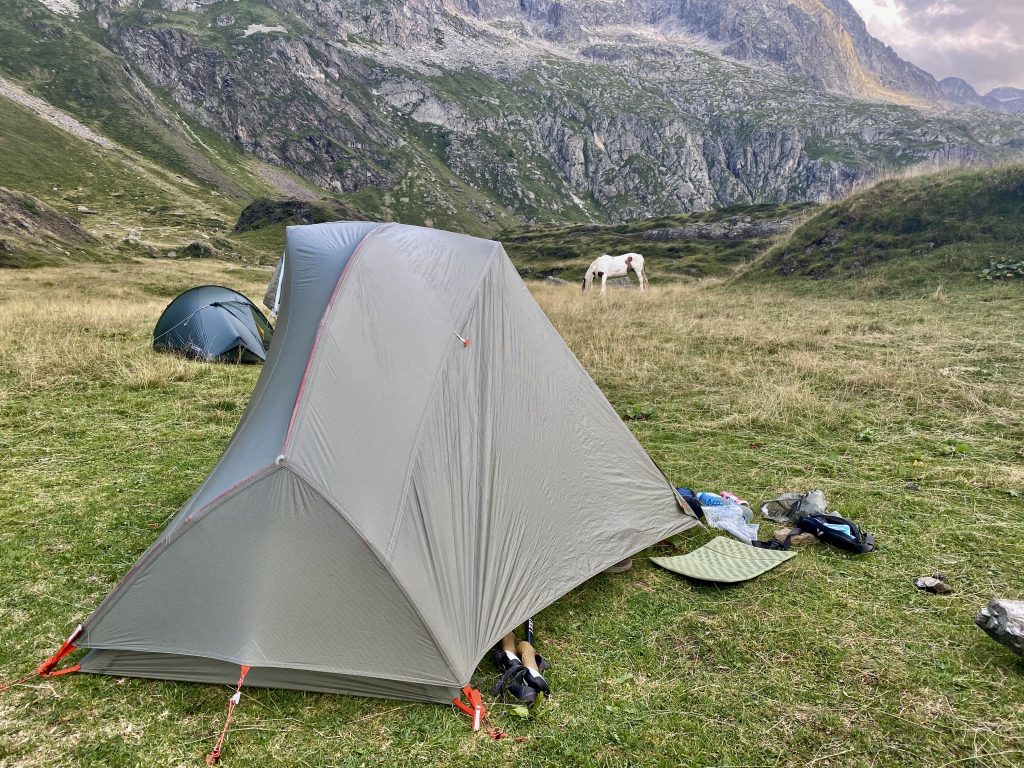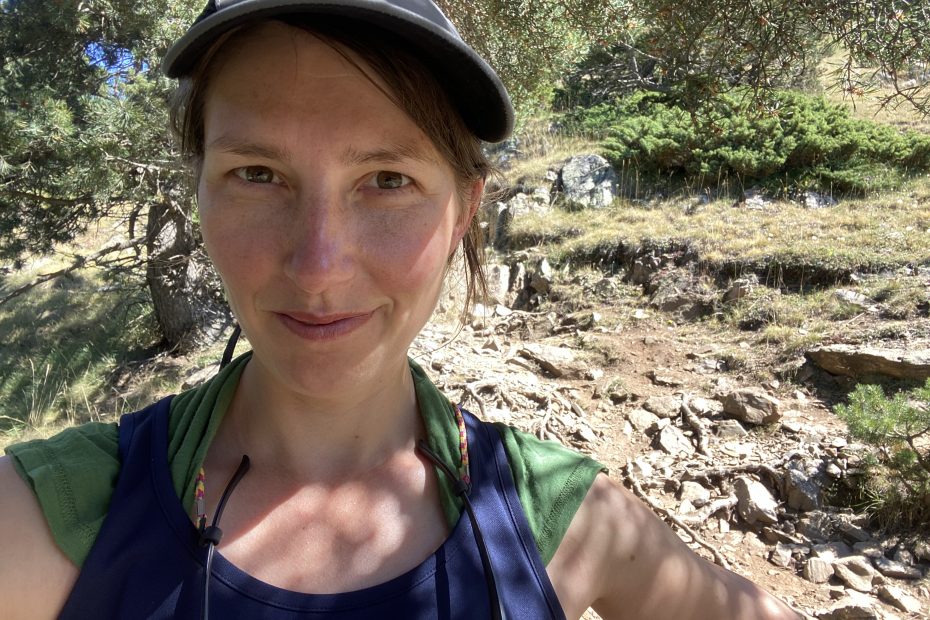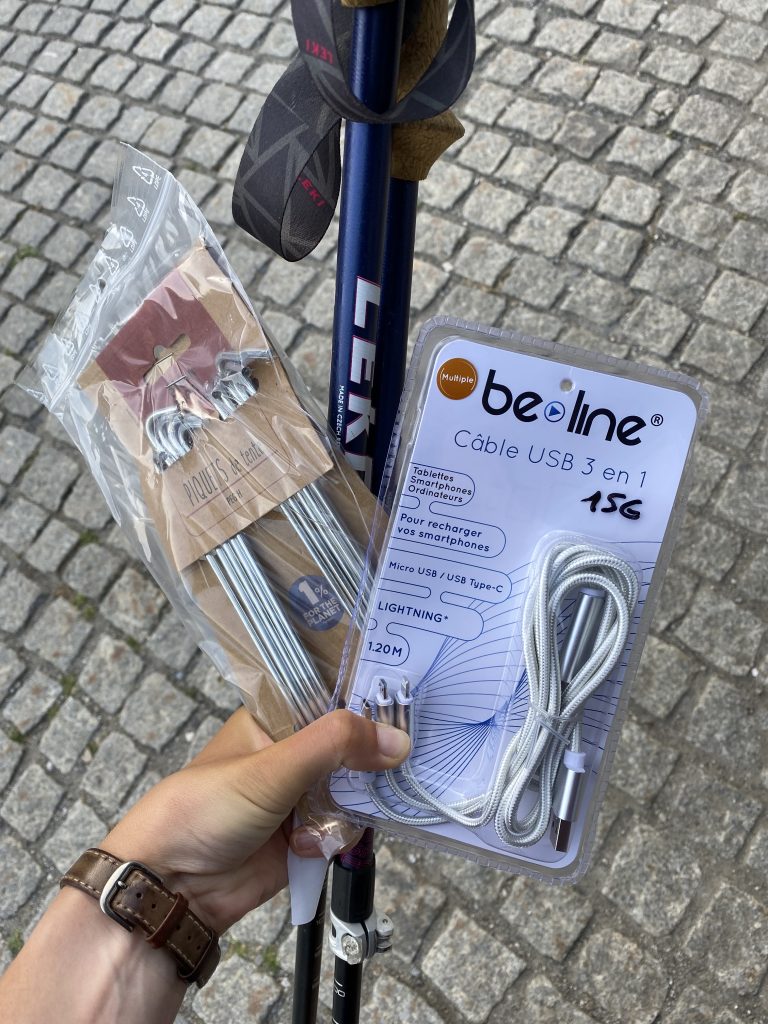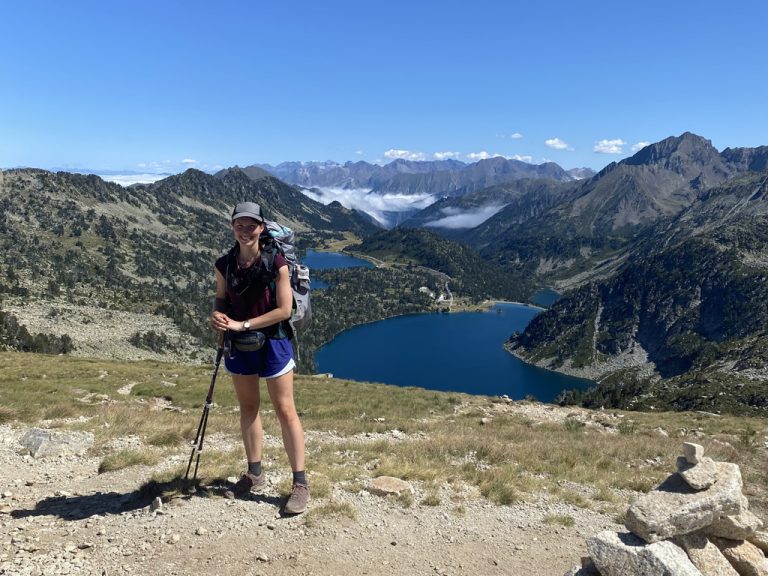A guide to hiking in the French Pyrenees (GR10): Cauterets to Luchon
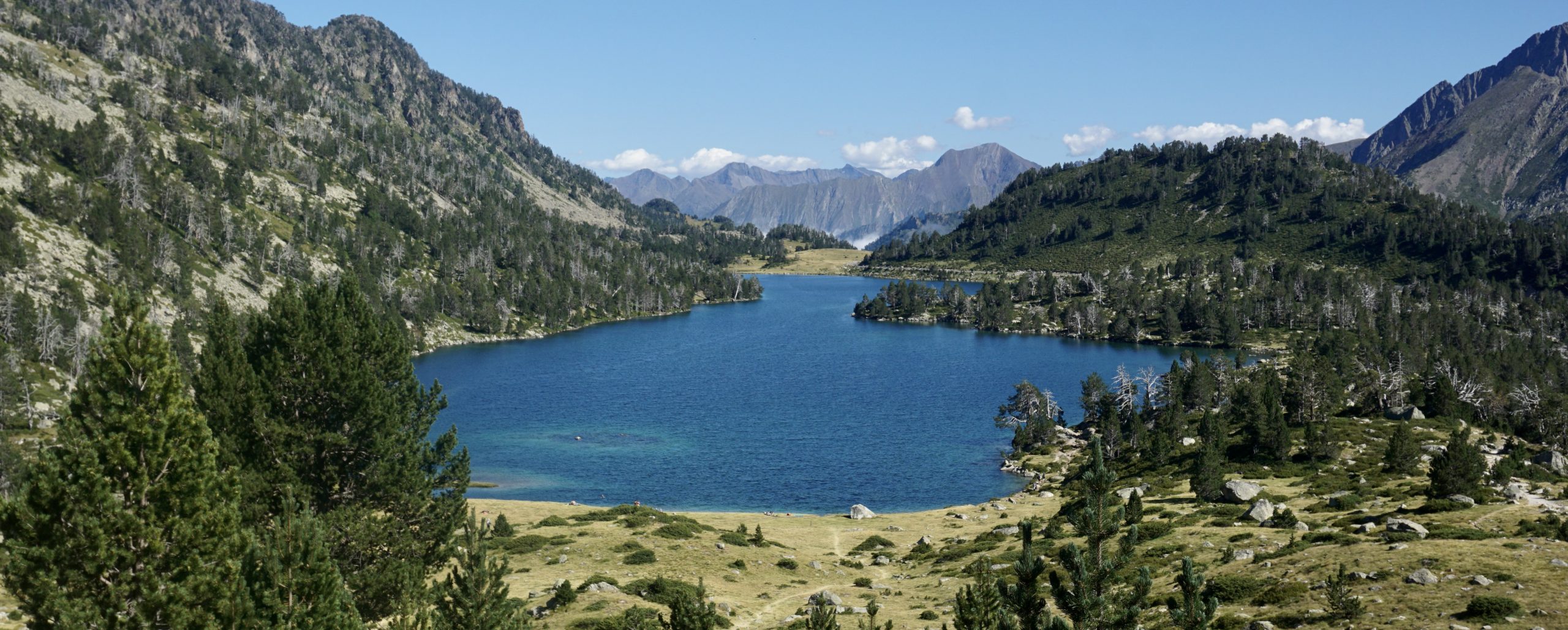
French Pyrenees: I have a feeling that the Pyrenees are a secret kept between France and Spain. The two countries share and enjoy these beautiful mountains while keeping all the “tourists” for the Alps (or Barcelona). Compared to the famous Alps, the Pyrenees are much more local, and 95% of all the hikers I’ve met were either Spanish or French.
Pyrenees mountains are quite steep and green, while clouds tend to linger above the valleys until late lunch, so you might be able to make those epic “above the clouds” pictures even at 14:00. While it’s less touristic than the Alps, the Pyrenees are no less busy, especially in August (more on that below). Countless lakes are a gift sent from heaven during hot days and the water temperature is actually very tolerable. Overall, I fell in love with this region and felt that it has its own unique landscape and vibe.
GR10: This trek crosses the whole Pyrenees range from the Atlantic Ocean to the Mediterranean sea (or vice versa) and takes around 45 days. It is a very well-marked hike that will definitely be a good challenge (more than 900km!), but also a great way to explore the very south of France, where the climate and landscape will be changing every few days.
As the same summer, I hiked GR5, I had no ambition to do another very long hike, so I went to the Pyrenees without planning to specifically follow GR10. I ended up exploring a section of it and honestly, it would be awesome to do the whole hike. Someday 🙂
Difficulty: I’d say that for the Pyrenees you should be in good physical shape. What makes it tough is the steepness of the mountains and the heat. I did not come across any technical sections or snow though, so I’d rate my trek as moderately difficult.
A note on the Pyrenees in August: I hiked in August which is the very peak of the summer holidays. While the busyness on the trail was ok, the valleys were packed. Apparently, many factories close in August for holidays, so the whole country flocks the mountains then (French people are outdoorsy!). One time I even had trouble finding a campsite that would have a place for me (a one-person tent here…). If you’d like a little bit of peace and quiet, I would suggest avoiding August. If that’s not possible, then make sure you book your accommodation in advance and even double-check with campsites a day ahead if they’re not full.
Itinerary
How I chose this route. Initially, my idea was to spend 9 days doing a circular hike in both French and Spanish Pyrenees. However, after three days, I changed my mind as I was too scared to cross the mountains to Spain. While at home I felt that a little bit of scrambling is ok, on the trail I was much more cautious and risk-averse. From other hikers, I learned that this particular crossing I was planning to do is quite technical and as a solo hiker I decided to play it safe rather than put myself into a stressful situation. And that is when I decided to follow GR10 until my time is up. So it was quite a spontaneous decision 🙂
How to get to the Pyrenees and Cauterets (if you want to follow my trail). The Pyrenees are loooooong, so how to get there really depends on your starting hiking point. As I started in Cauterets, for me it was handy to travel to Lourdes. I took a direct train from Paris, which was very handy and much faster than a car. Toulouse is another handy city to reach, you can even fly there.
To reach Cauterets, my starting point, I took a bus from Lourdes. They don’t go often, but often enough to accommodate a morning start of a hike.
Itinerary. My itinerary followed GR10 for the most part with a few exceptions on the first half of the trip. On average I hiked 18km and around 8 hours per day, including lunch and chill breaks. Due to the heat, I learned to wake up early, start hiking at 8:00 and have a long lunch break during the hottest time of the day (just following the locals…) to finish the hike in lower temperature. The only drawback of this strategy is a higher risk of catching an afternoon storm. If there was a chance of a storm, I usually pushed myself to finish the hike by 15:00.
*Duration includes all breaks (rest, lunch, photos, etc.), it’s the total time it took me to reach the final location.
Day Start Finish Duration* Distance Elevation gain Elevation loss Accommodation
1 Cauterets Refuge des Oulettes de Gaube 08:05 21 1400m 200m Aire de bivouac
2 Refuge des Oulettes de Gaube Refuge des Granges de Holle 10:45 24 1100m 1740m Camping next to the refuge
3 Refuge des Granges de Holle Gavarnie 06:35 14 850m 970m Camping Toy
4 Luz Gite de Saint-Justin 03:00 8 750m 210m Camping at Saint-Justin
5 Gite de Saint-Justin Lac d’Aubert 08:55 18 1460m 560m Aire de bivouac
6 Lac d’Aubert Saint-Lary Soulan 09:10 27 870m 2200m Camping
7 Saint-Lary Soulan Germ 06:30 13 1205m 660m Camping next to gite
8 Germ Lac d’Espingo 09:45 18 1780m 1280m Aire de bivouac
9 Lac d’Espingo Bagneres de Luchon 08:35 21 730m 1980m Camping Des Thermes
Accommodation
Accommodation options. During my 9 days in the Pyrenees, I camped all the time (combined wild camping with staying in campsites). However, besides camping, the Pyrenees offer other types of accommodation too: mountain cabins (refuges), gîtes d’etape, hotels. Therefore, camping is not necessary, you can easily sleep under a roof the whole time. The opposite holds as well – if you want to, you can camp the whole time.
Below you can find a short overview of each accommodation type with facilities and average prices.
Wild camping – it is allowed in France almost everywhere as long as you stay high enough (above the tree line). In the Pyrenees, there are some restricted areas (national parks or protected nature parks) where you are allowed to wild camp only in designated places (also known as aire de bivouac) and when you pitch your tent after 18:00. Most of the time those places are close to a refuge and as they are an alternative to wild camping, they are free of charge. Once you enter a park, there will be signs indicating whether wild camping is not permitted. When in doubt, ask the wardens of the huts or fellow hikers about where you are allowed to camp.
Parks where I found that wild camping is only allowed in aire de bivouac places: Vallée de Gaube, Réserve naturelle du Néouvielle.
Camping at campsites – almost all bigger villages or towns have a campsite or even a few. In most of them, besides a shower and toilet, you can do laundry and order fresh bread for the morning (French are serious about their bread). Some of the campsites even have a restaurant. A campsite for a small tent and a single person on average costs 8 – 9 Eur.
Mountain cabins (refuges) – sometimes also called chalets, the refuges are densely populated in the mountains, so most of the time you are within 3 – 4 hours from the nearest refuge. They offer so-called half-board deals that include a bed, 3-course dinner, and breakfast. Half-board costs around 45 – 55 Eur, which is quite a good deal. You can also ask for a bed only, then the price is 20 – 25 Eur. Many refuges sit in a spectacular location and in summer tend to get full, so I recommend booking them in advance. Pay attention to bed “equipment” requirements as some refuges require you to have your own sleeping bag, while others require a sleeping bag liner only.
I did not stay in any of the refuges because usually, I don’t sleep well in there. Refuges are arranged in a dormitory-style with many bunk beds in one room and there is always at least one snorer. Believe me, always. As earplugs do not help much, I try to avoid refuges. It is a nice experience though if you’re a deep sleeper 🙂
Gîtes d’etape – they are something like a mountain hostel. Gîtes d’etape usually has smaller rooms than refuges, there is a common kitchen to be used for cooking, there is an eating area, sheets are mostly provided (but please double-check upfront). They are mostly located in the valleys and are definitely cheaper than hotels (20 – 30 Eur per person). While gîtes d’etape are quite basic, there are also gîtes, which are much more fancy and comfy and offer a similar experience to a small hotel. Those are usually more expensive and might cost ~60 Eur per person.
Hotels – the valleys will offer plenty of hotel options for any budget: from a simple room with a shared bathroom to a luxurious suite with a view of the mountains.
Gear
In the picture above you can see all the things that went into my backpack. Total base weight (without water and food): 7.9kg. While on GR5 I started with less, this time I was on my own and with nobody to share the weight. I got a light one-person tent from Big Agnes to help me reduce “the damage” and I was quite meticulous when selecting all the items.
A full list of my gear can be found here (a great website to log your gear btw). I made a distinction between the things in my backpack and things I’m wearing as those do not really add weight. I also separated the consumables – all those items that get lighter every day, e.g. food, sunscreen, stove gas.
Top 5 items, I appreciated in this hike:
- My (own) tent – for my solo hiking experiences I got Big Agnes Copper Spur HV UL1 one-person tent and I loved it. It weighs only 1kg and is super easy to set up. I could put all my belongings inside with me and even organize the most needed items in various pockets.
- Sun hoody – this hoody from Uniqlo is with me for a few years now and it was very much needed in the Pyrenees. Hiking in August can be quite exhausting due to hot days. Therefore, I enjoyed having protection from the harsh sun and didn’t burn my arms and ears. It might sound (and look) counterintuitive to wear long sleeves in the heat, but the material is actually very light and even helps cool down.
- Satellite communicator – as this was my first solo long-distance hike in the mountains, I got a satellite communicator (Garmin inReach mini), which was my best friend. When I didn’t have a phone signal, I could still communicate with my family and get help if needed. The best investment this year, giving me and my family peace of mind.
- Sports bra – I was wearing Adidas All me 3-stripes bra and it’s my favorite one not only for hikes but for overall life 🙂 Besides being very simple and comfortable, it’s also great for swimming (I tested it on two lakes in the Pyrenees).
- Cooking pan – originally I got this cooking pan (MSR Trail Lite Pot, 1,3 l) for GR5 to be used for two-person dishes. I was so glad to have a bit bigger pan in the Pyrenees too as it didn’t limit my diner portions. Every evening I was very hungry and so I really appreciate the big portions. While it was a bit bigger, I always found items to stuff inside it when packing (e.g. spices and sauces).
For more info about cooking on the trail, check out the post What to eat on a hiking trip? My food hits and misses
3 items I would not take if I did the same trip again:
- Rain jacket – during my trip there was no rain, so I carried my North Face jacket for nothing. Now I’m not saying the rain jacket is not needed, it definitely is as the Pyrenees can have some great storms. Next time I would get a much lighter jacket though to protect me when in need and otherwise not burden me too much.
- Sleeveless t-shirt – soon into the hike I found out that my shoulders are too exposed when wearing a sleeveless t-shirt (I used sunscreen too by the way!). I even used my neck gaiter to cover the shoulders from the sun. Therefore, next time I would only take t-shirts that cover my shoulders.
- A USB-c charging cable (only) – I thought I was being smart when I took my boyfriend’s charger, which has a USB-c connection. I’ll charge my phone much quicker! Yes, but I forgot to take a USB cable that connects my phone with a power bank. So on my first night in the wild, I found out that I don’t have the right cable for the power bank and I cannot charge my phone. Luckily nearby camping hikers had the right cable and the next day I descended into the valley to get a proper cable. The moral of the story – double-check new gear, maybe something is missing.
Daily journal
So how was it? Currently, I’m busy writing about my experiences and adventures in a daily journal. For each day published, you’ll find not only my stories but also more pictures and practical tips for that particular stage. If you still miss any information, feel free to post your question(s) in the comment section (at the bottom of each daily journal) or contact me via a contact form.
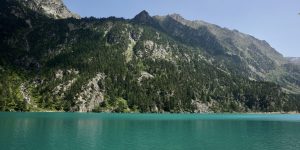
Day 1: Cauterets – Refuge des Oulettes de Gaube
I was excited, nervous, focused, curious – a hurricane of emotions went through my head as I headed to the beginning of the trail. After years of hiking with Edo, it was kind of weird to be alone.
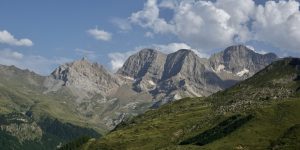
Day 2: Refuge des Oulettes de Gaube – Refuge des Granges de Holle
It’s day #2 and it was a long day. Many kilometers, many experiences. it started with quite a long climb to Hourquette d’Ossoue (2734m), which is the highest pass on GR10.
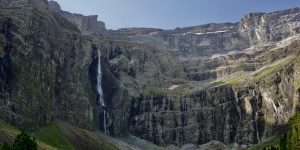
Day 3: Refuge des Granges de Holle - Gavarnie
Today I planned to divert from GR10 to cross to the Spanish side of the Pyrenees. Plans are meant to be broken though and I didn’t make it to Spain. Day 3 was actually the most stressful of the whole Pyrenees trip.

Day 4: Luz – Gîte de Saint-Justin
After a dramatic third day, I slept like a baby. Gavarnie and its drama were left behind, today I woke up in Luz, a nearby mountain village, buzzing with summer visitors.
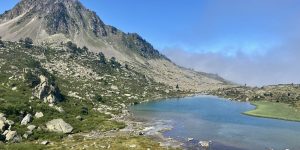
Day 5: Gîte de Saint-Justin – Lac d'Aubert
As a warm glow of early morning sun slowly moved through the hills, I walked out of the camping of Gîte de Saint-Justin, grateful for the peace and quiet I got.
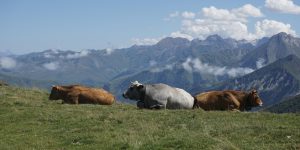
Day 6: Lac d'Aubert - Saint-Lary Soulan
Today is a long day, with 27km waiting for me. The good news is that I only need to go up during the first half of the day and then it’s mostly down. 2200m down 😀
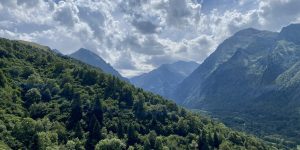
Day 7: Saint-Lary Soulan - Germ
It’s one of those days when elevation is not extreme (although still 1200m up!) and the trail passes numerous villages while keeping the mountains in the distance.
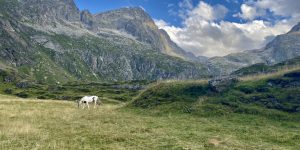
Day 8: Germ - Lac d'Espingo
I hear fellow hikers shouting to me in french, I guess to come back. That’s very sweet of them, but mama cows will not let me cut corners so easily.
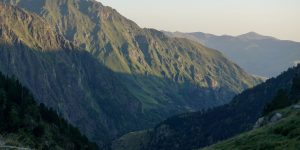
Day 9: Lac d'Espingo - Bagnères-de-Luchon
I woke up at night wondering who turned the light on. Oh wait, I’m in the middle of the mountains, wild camping next to a lake. The light? What the hell…?
Photos
